Course
- 2 years Course (enrollment in April)
- 1 year 6 months Course (enrollment in October)
Features
-


Dedicated homeroom system → Anytime, anything … Detailed student support
This department has a homeroom system with a full-time teacher is assigned to all classes. Unlike systems with part-time homeroom teachers, our full-time faculty members are always at school, so they can respond to student questions and provide consultation at any time. In addition, after class, teachers also provide supplementary instruction and guidance for Japanese studies and they can provide more detailed instruction both during and outside class.
-


Curriculum that emphasizes communication skills
Starting with conversational classes, students work on group work, one-minute speeches, learning to present, etc. Also, in regular classes, students will gradually improve their conversational skills by focusing on learning through discussions and using the words and grammar they have learned. An additional goal is to develop strategies for communicating in the Japanese that they can use.
-

Significant in-class time
The Kobe Electronics Vocational School Department of Japanese not only meets the standards set by the Ministry of Justice Immigration Service Agency of Japan, but also meets the criteria for vocational schools in Japan which means that the number of lesson hours is higher than regular Japanese language schools.
Regular Japanese language school Kobe Institute of Computing – College of Computing (KD) Department of Japanese 760 hours/year 850 hours/year 45 minutes/1 hour 50 minutes/1 hour Furthermore, our dedicated homeroom system establishes individual instruction with opportunities for independent learning outside of regular classes. We aim to further student acquisition of Japanese language skills while strengthening independence.
-
2 years Course (enrollment in April)
- Over two years, students learn Japanese from the basics to applications and acquire a wide range of language skills.
- The goal is to get N1 of JLPT.

-
1 year 6 months Course (enrollment in October)
- From the basics to everyday Japanese, you will learn the Japanese necessary to study wherever you end up.
- The goal is to get N2 of JLPT.

Content of study
| Beginner | The six months from admission(425 hours) | Learn basic grammar. Be able to communicate and read and write plain texts necessary for daily life. Grammar (N3 level), listening comprehension, reading comprehension, character vocabulary, composition, communication games, presentations on learning |
| Intermediate | From month six to the end of year one(425 hours) | Have a well-balanced grasp of the four language skills. Be able to explain and comment on personal events and social topics. Grammar (N2 level), listening comprehension, reading comprehension, character vocabulary, essay, conversational expressions, presentations on learning, JLPT preparation, EJU preparation |
| Advanced I | From first year after admission to one year and six months(425 hours) | Learn advanced grammar, understand Japanese in newspapers, documentary and other programs, and be able to state opinions with reasons. Grammar (N1 level), listening comprehension, reading comprehension, character vocabulary, essay, conversational expressions, presentations on learning, JLPT preparation, EJU preparation, newspaper & TV program and other live teaching materials, speech, Japanese affairs |
| Advanced II | From one year and six months after admission to two years(425 hours) | Improve Japanese proficiency. Be able to understand newspaper editorials and dissertations and state their opinions with reasons. Grammar (N1 level), listening comprehension, reading comprehension, character vocabulary, essay, conversational expressions, presentations on learning, JLPT preparation, EJU preparation, newspaper & TV program and other live teaching materials, speech, Japanese affairs |
After graduation

- University
- Ritsumeikan University, Kwansei Gakuin University, Kindai University, Kyoto Sangyo University, Kyoto Seika University, Kobe Design University, Kobe Yamate University, Kobe Gakuin University, etc.

- Graduate School
- Graduate School of Tokyo University of the Arts, Graduate School of University of Tsukuba, Graduate School of Kobe University, Graduate School of Wakayama University, Graduate School of Kyushu University, Graduate School of Osaka Prefecture University, Graduate School of Kansai University, Graduate School of Osaka Sangyo University, Graduate School of Konan University, Graduate School of Osaka University of Arts, Graduate School of Kobe Design University, Graduate School of Osaka Institute of Technology, Graduate School of Otemon Gakuin University, Kobe Institute of Computing-Graduate School of Information Technology, etc.

- Vocational College
- Kobe Institute of Computing – College of Computing
Automobile repair field, hotel & tourism field, care welfare field, game field, animation field, music field, dress design field, etc.

